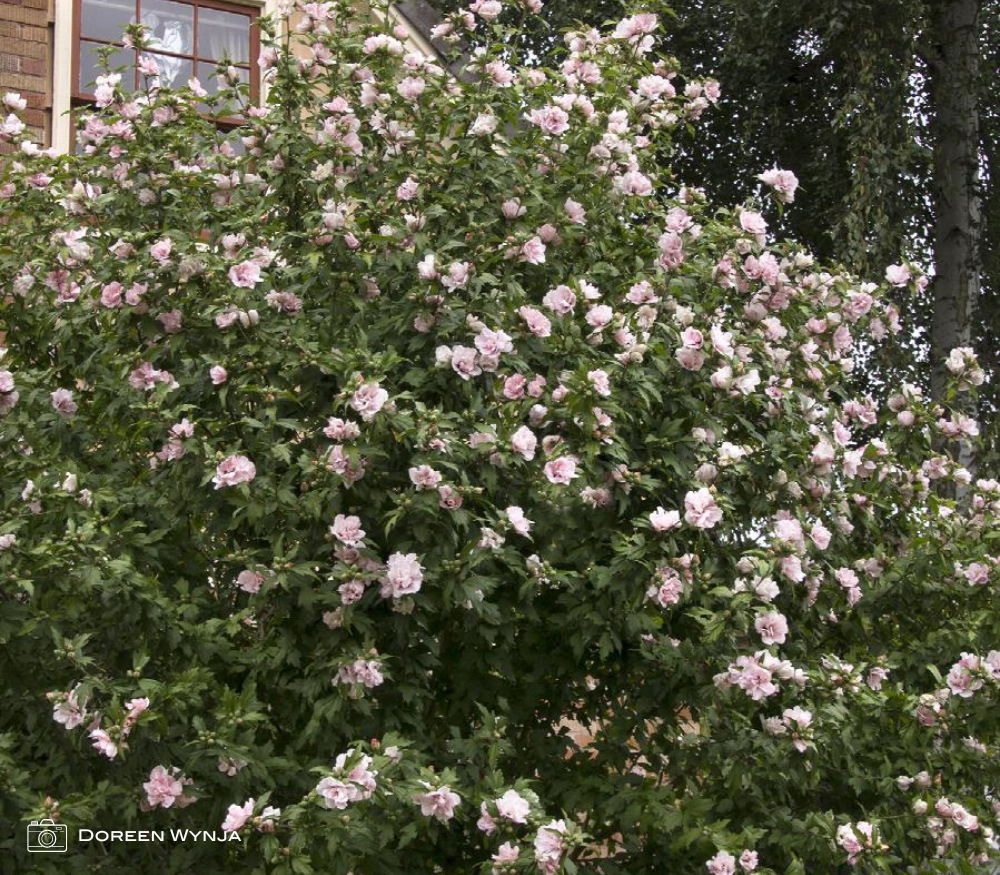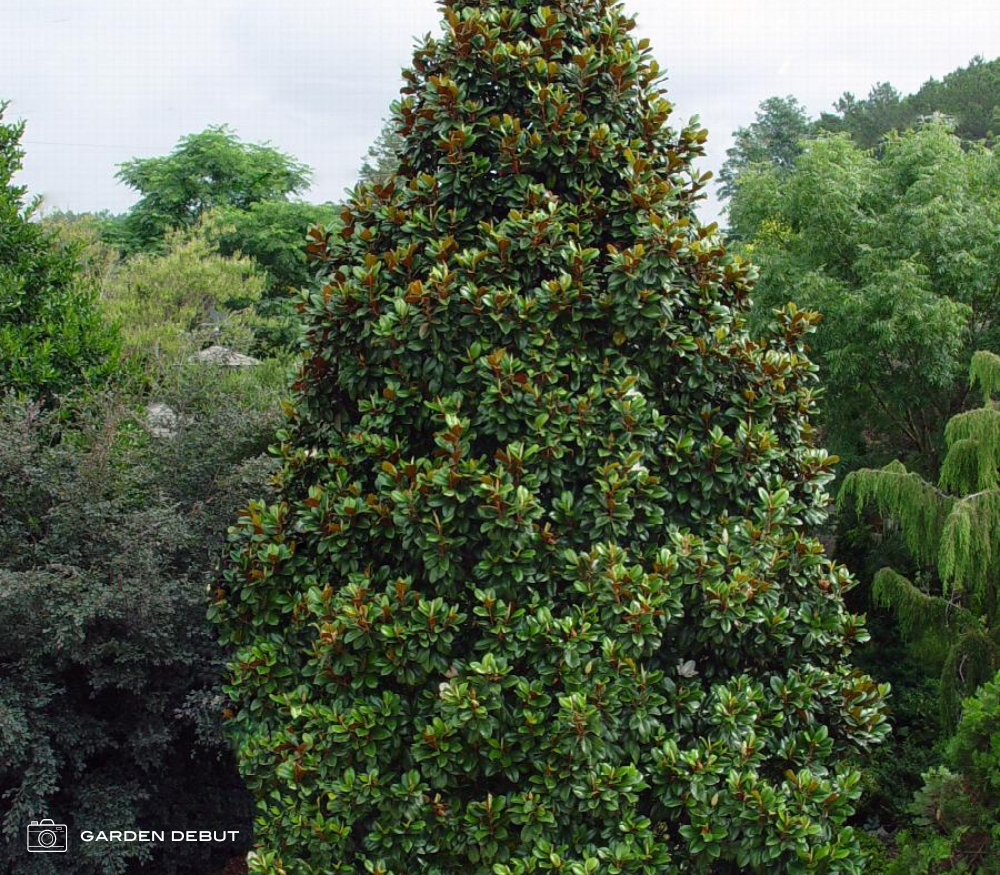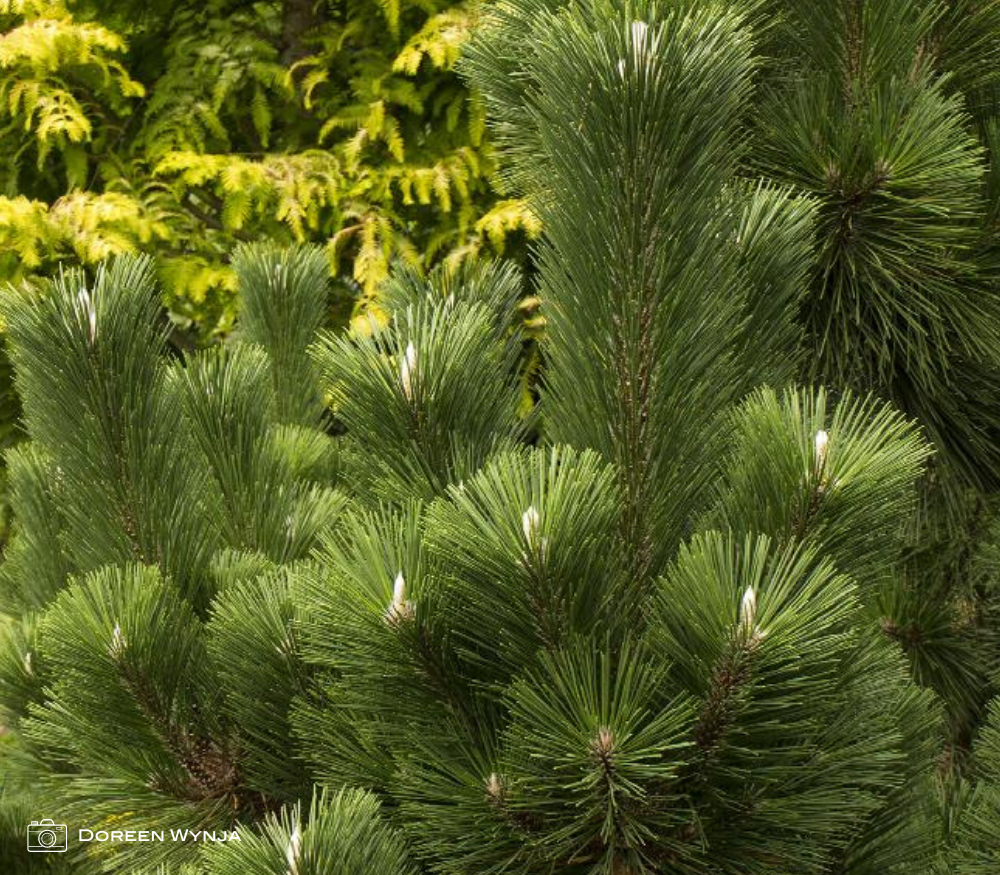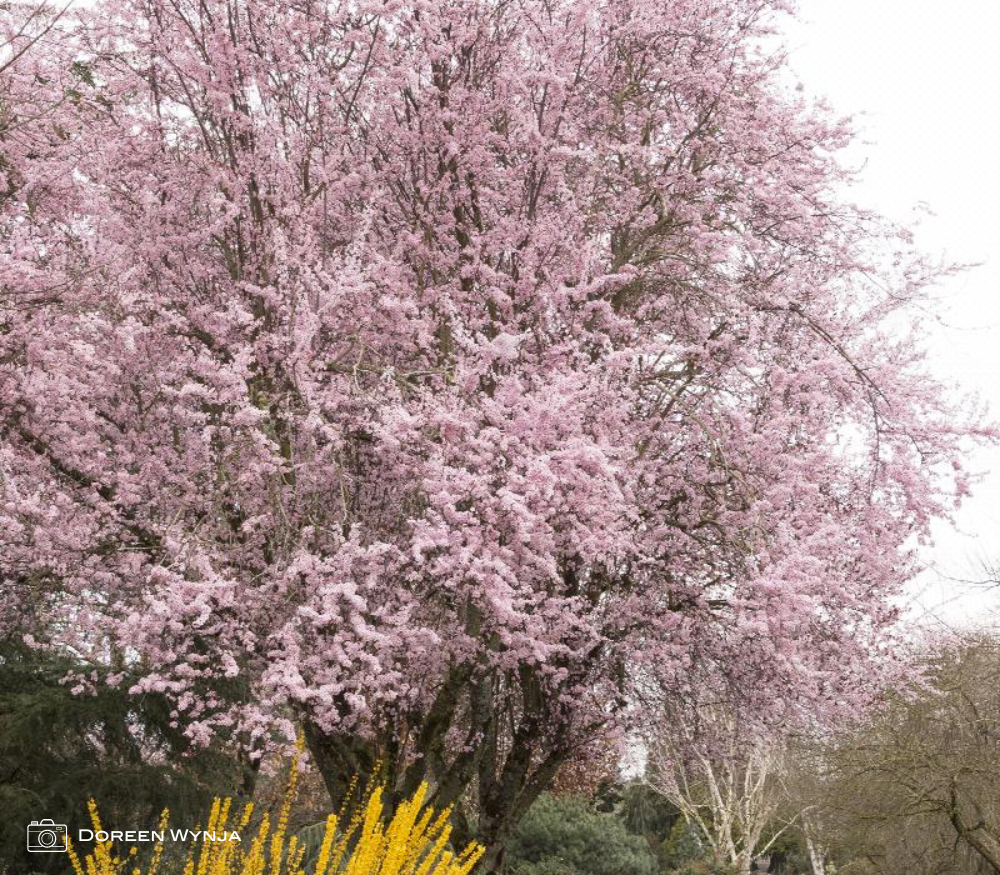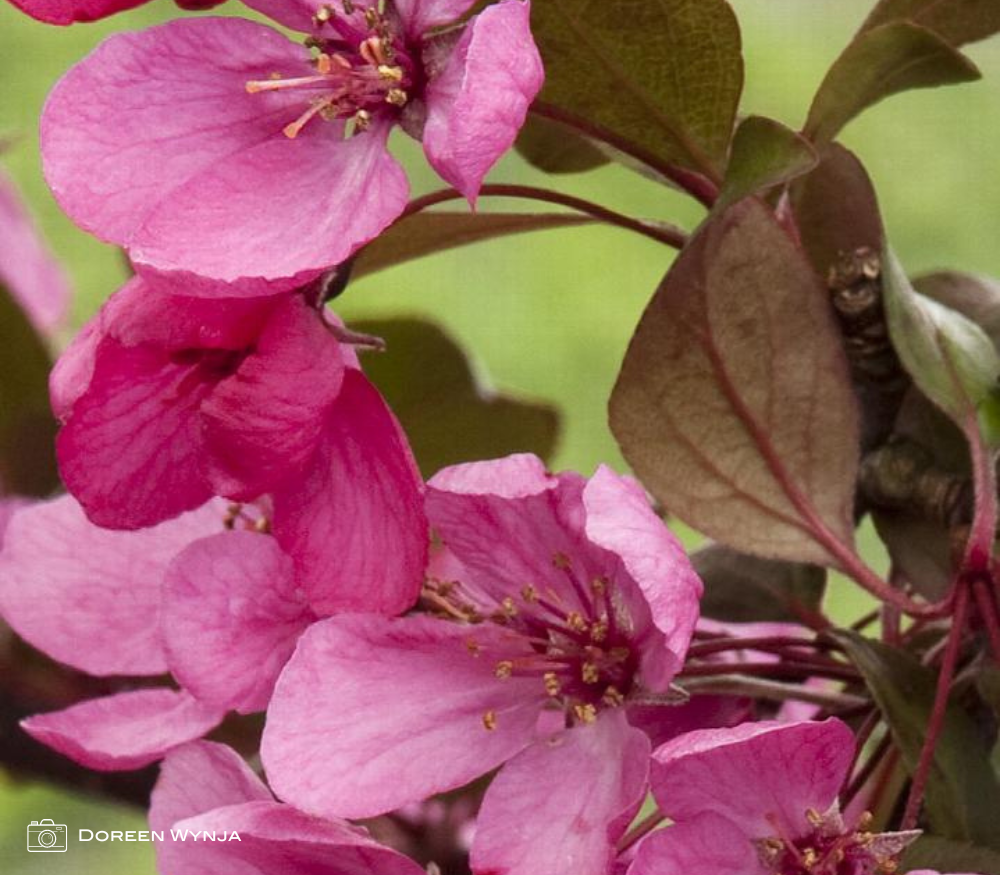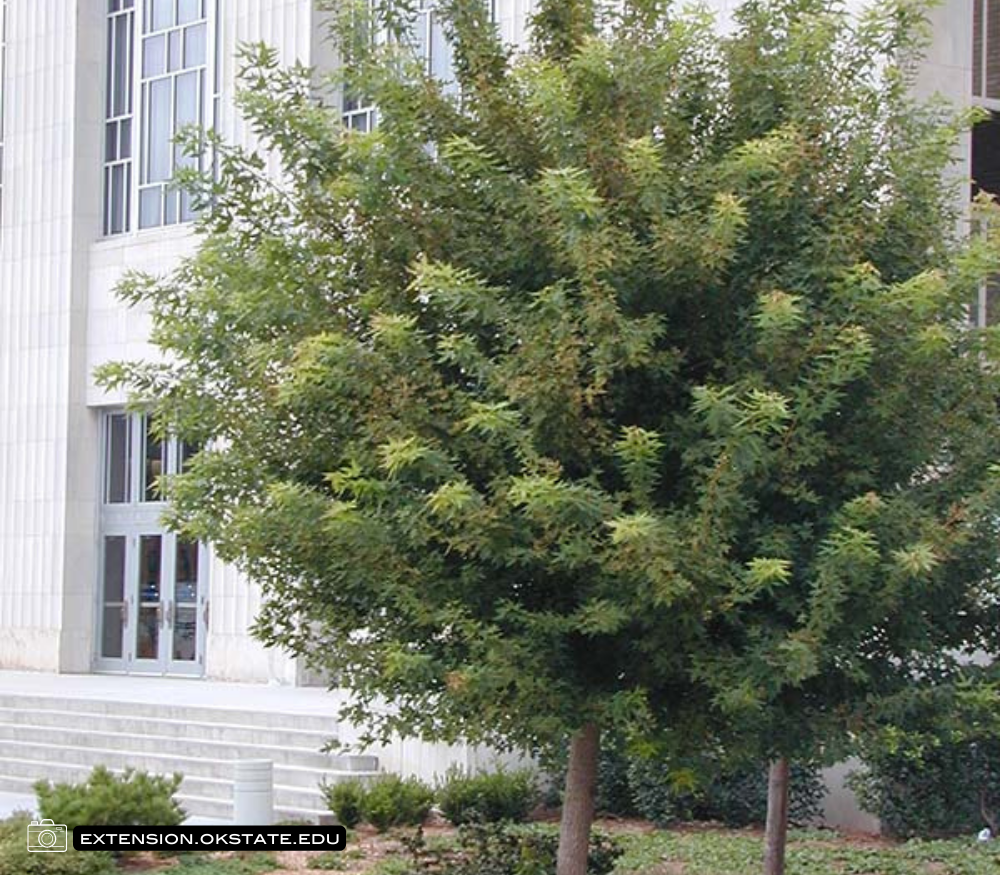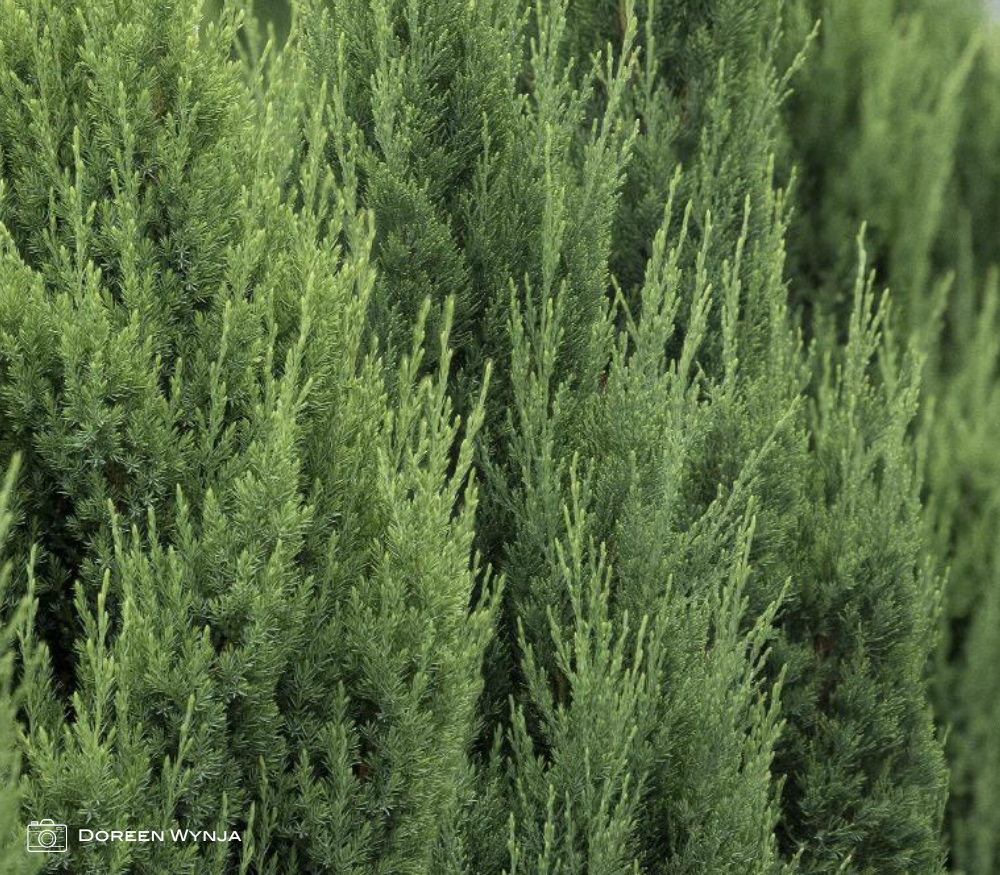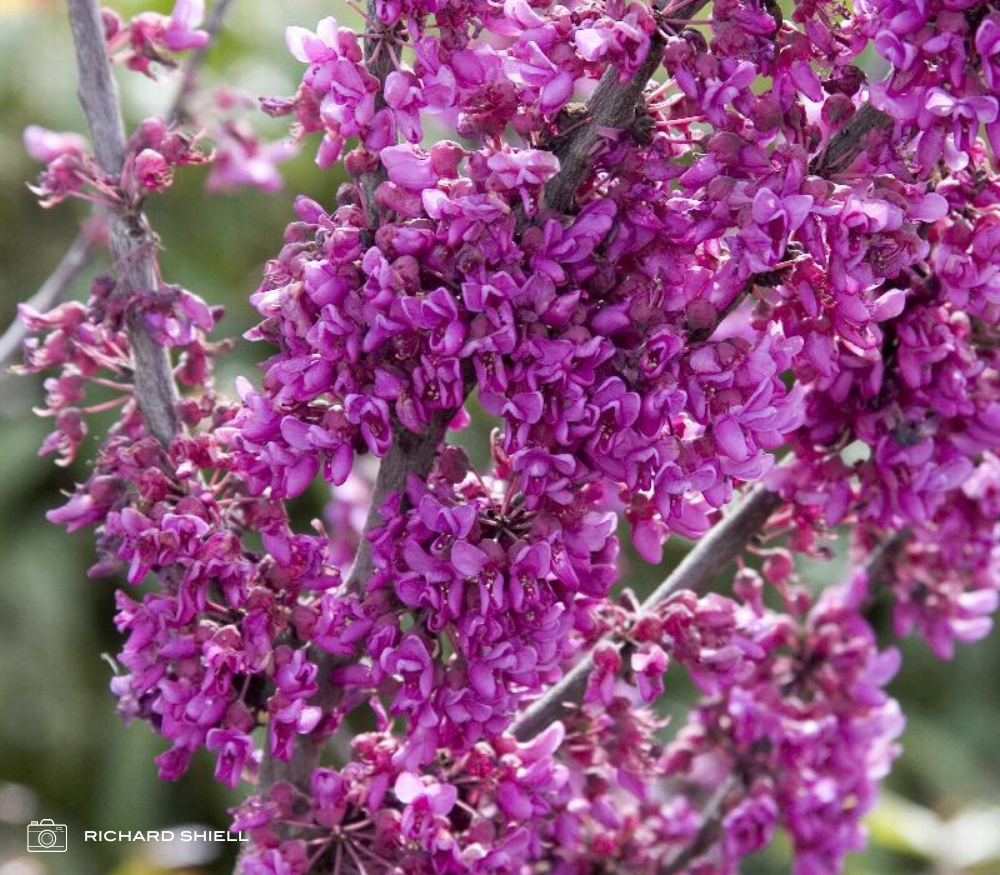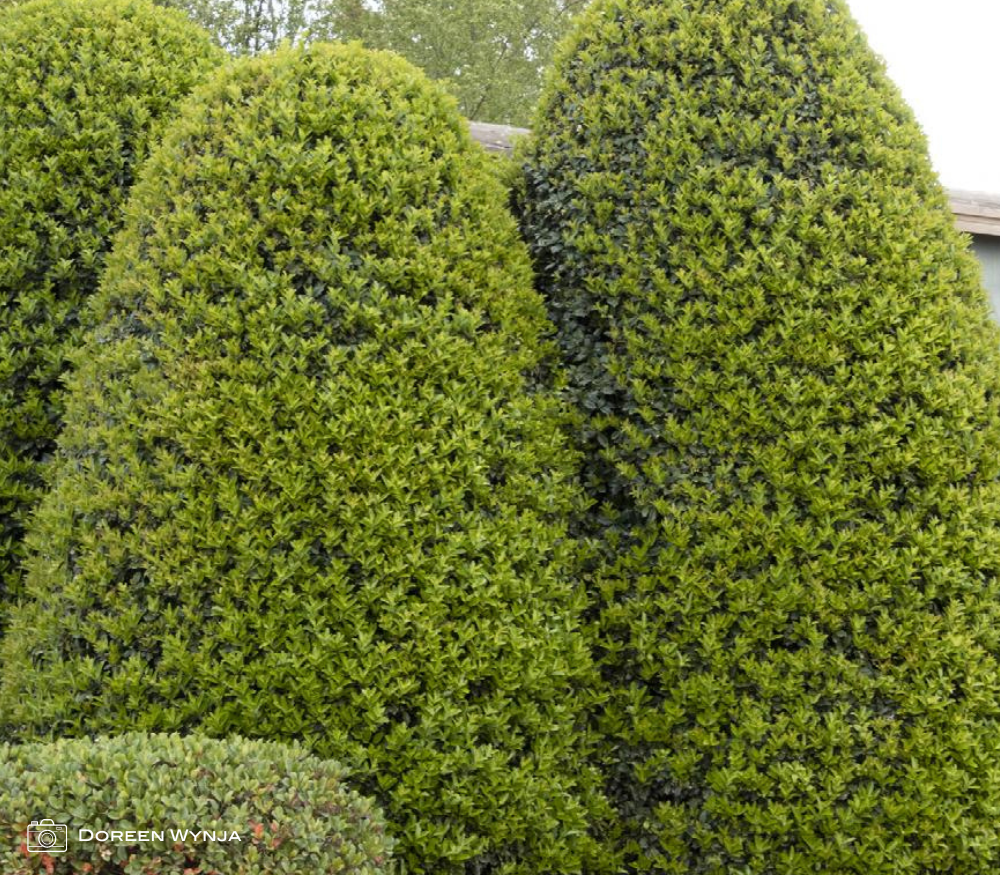Trees that Are Safe for Power Line Areas
If you have ever wondered which trees are best suited for planting under and near power lines, we have the list for you!
Choosing the correct trees means you won’t interfere with power lines, and your trees can grow to their intended height and beauty. You won’t have utility companies performing what are usually unsightly pruning jobs, or, worse yet, you won’t be responsible for power outages in your neighborhood or the cause of other safety concerns to your family and neighbors.
Watch our video to see some of our choices to use for power line applications in your landscape, and continue reading to get more specific information about each plant featured in the video.
BLUSHING BRIDE ALTHEA
Althea, also known as Rose of Sharon, is a dependable, tough plant for the Oklahoma climate. It tolerates a wide range of soil conditions (it isn’t fussy about pH levels) and weather conditions (it isn’t bothered by heat or humidity), and it can withstand drought conditions once established, too.
There are many althea varieties, and all of them are safe for use under power lines (some stay quite small, in fact). Perhaps you prefer a more vibrant bloom color, or a bloom that more resembles a tropical hibiscus bloom rather than a double blooming flower; no matter, there is an althea for you!
Just plant your althea in well-drained soil, and then sit back and enjoy the flower show throughout the summer months!
Check out other althea varieties using this link
TEDDY BEAR® MAGNOLIA
We love so many things about the Teddy Bear® Magnolia!
The Teddy Bear® Magnolia gives you everything you love about the southern magnolia but in a compact form! This upright evergreen has shiny, deep green leaves with velvety, reddish brown undersides, and the classic, 6 to 8″ wide, fragrant, white flowers. The Teddy Bear® magnolia is a beautiful specimen tree for smaller landscapes, an outstanding accent in larger landscapes, and it is well-suited to plant under power lines.
There are other dwarf southern varieties to consider for specimen or accent planting (links below). They do get taller than the Teddy Bear® Magnolia, so they aren’t as well suited for planting under power lines, however.
Little Gem Magnolia
Bracken’s Brown Beauty Magnolia
THUNDERHEAD PINE
The Thunderhead Japanese Black Pine is a dense, mult-stemmed, evergreen shrub. It will grow to around 10′ tall and 15′ wide at maturity (so make sure to leave plenty of room for it to spread out in the garden), making it a great choice for privacy screens and for use under power lines.
Thunderhead Pine performs well in our hot, Oklahoma summers, too! It prefers well-drained soil, and it does not tolerate standing water. Though it prefers to be on the drier side, it may require supplemental watering during periods of drought or extended heat, especially while it is young and getting established.
AMUR MAPLE
Amur Maple is one of the toughest growing plants for Oklahoma landscapes, and its beauty matches its braun!
Amur Maple is spectacular in the fall when its colors range from orange to scarlet to burgundy red. When grown in a multi-stem form, it can be expected to reach a height and spread of 20′; single trunk options are available as well, but their canopies typically don’t spread as wide as a multi-trunk tree. It has several applications in the landscape other than for planting under power lines; for example, it is gorgeous when planted en masse, and it also makes a great accent tree.
THUNDERCLOUD PLUM
Purple Plum is a favorite around Marcum’s Nursery for its ease in transplanting as well as its ability to handle the Oklahoma climate. Other characteristics that cause it to rank so highly on the list of favored trees are its gorgeous clusters of fragrant pink blooms that show up in spring followed by beautiful deep purple foliage that holds its color so well even in the heat of the Oklahoma summer.
We often recommend the Thundercloud Plum for people who really want a dark-leafed Japanese Maple but lack the sun and wind protection they require in Oklahoma. The Purple Plum makes a bold statement in the landscape and is also a great choice for planting under power lines as it only reaches about 20′ in height.
CRABAPPLES
If you are looking for a tree to let you know it’s FINALLY spring, crabapples are the way to go!
Their prolific white, pink, or reddish blooms put on a show in the early spring landscape, and their fall foliage isn’t too shabby either. Most crabapple varieties produce fruit of varying sizes making them great for attracting wildlife. However, people looking for a less messy tree shouldn’t count the crabapple out as the fruit hangs onto the trees really well, and there are even a few non-fruiting (or almost fruitless) varieties for those vehemently opposed to fruit – Spring Snow is a sterile variety and Prairie Rose is mostly fruitless, for example.
Most crabapple trees are sized appropriately to make them suitable for planting under power lines, too.
Click the ‘CRABAPPLES’ button to the right to see multiple varieties, or click the links below to learn more about the varieties detailed in our video:
Spring Snow Crabapple
Radiant Crabapple
Royal Raindrops® Crabapple
JUNIPERS
Junipers are so versatile and so numerous in variety! There is a juniper for almost every application in the landscape it seems. As such, it should come as no surprise that there are several upright varieties that can safely be planted under power lines. For a thorough list of junipers, click the ‘JUNIPERS’ button. To learn more about the specific varieties we detailed in our video, click the links below:
Hollywood Juniper
Blue Point Juniper
OKLAHOMA REDBUD
The state tree of Oklahoma, the redbud is a small tree native to the southwest, including Oklahoma! Its small, brilliant pink flowers appear in early spring before its foliage, and its glossy heart-shaped leaves are attractive as well.
Since it is a native tree, you might guess that it can tolerate our heavy, clay soil conditions…and, of course, you would be correct. With that said, keep in mind that redbuds growing in fields and pastures only receive moisture through rainfall meaning the soil usually dries out signigicantly between waterings. Plant your redbud in well-draining soil when possible, and be sure not to overwater; in our experience, overwatering is the most frequent cause for a redbud not surviving in the landscape.
HOLLIES
Hollies come in a variety of shapes and sizes. While they are generally thought of as evergreen, there are even deciduous hollies, too.
The varieties we detailed in our video are all dense, multi-stemmed, evergreen varieties. They are great for privacy screen options as they retain their foliage throughout the winter, and many of them provide shelter and food for birds throughout the winter months as well.
For a more exhaustive list of holly varieties, click on the ‘HOLLIES’ button. To learn more about the varieties featured in our video, click the links below (note, the Foster’s Holly should not be planted under low hanging power lines):
Foster’s Holly
Nellie R. Stevens Holly
Oakland® Holly
Oak Land™ Holly
Yaupon Holly
MORE GREAT OPTIONS TO CONSIDER
Below, we have listed some other great trees for planting under power lines; click the links to learn specifics about each option:
Royal Star Magnolia
The Royal Star Magnolia is more than a tree; it’s a statement. Growing up to only 15-20′, this slow-growing species is perfect for power line adjacency. When spring arrives, it showcases an explosion of awe-inspiring white flowers that steal the show. The Star Magnolia’s layered branches and bright green leaves create a picturesque view, making it a popular choice among gardening enthusiasts and industry professionals alike.
Crape Myrtles
Known for its vibrant colors, the Crape Myrtle makes an exciting addition to any landscape. Crape Myrtles range in size from only about 1′ in height for some miniature varieties all the way up to 15-25′ for standard-sized varieties, making them an excellent choice for areas close to power lines. The blooms come in shades of pink, purple, red, and white, so there is a color choice for almost any garden aesthetic; some crape myrtles even have dark, almost black, foliage which provides an even more striking contrast against the brightly colored blooms. But the Crape Myrtle’s charm doesn’t stop there. The tree’s exfoliating bark reveals a stunning spectrum of grays, browns, and creams, making the Crape Myrtle an attractive addition all year round.
Autumn Brilliance Serviceberry
The Serviceberry is a four-season performer with blossoms in spring, berries in summer, vibrant foliage in fall, and twisted, picturesque bare branches on display in winter. Growing 15-25′, it’s a great choice near power lines. Plus, its berries are edible, offering a sweet treat for both people and wildlife. It’s an easy-care tree that brings an enormous amount of beauty to a landscape.
Smokebush
The Smokebush offers a unique, smoky allure. This drought-resistant tree grows to about 15-30′ depending on variety and growing conditions, and it produces fluffy, smoke-like flowers, giving it an ethereal appeal (and its name). It’s not just its flowers that impress; the Smokebush’s leaves offer an autumn spectacle as well. Being adaptable and tolerant of many soil conditions, it’s a fantastic low-maintenance tree to plant near power lines.
Horstmann Blue Atlas Cedar
The Horstmann Blue Atlas Cedar is an excellent dwarf conifer for planting in Oklahoma. It’s upright habit and silvery-blue needles are striking in the landscape, especially throughout the winter months. Only growing to 12′, the Horstmann is an excellent choice for smaller landscapes and planting near houses as well as under power lines.
Tree Lilac
The Japanese Tree Lilac is a landscape showstopper. With its impressive white blooms and a growth height up to 25′, this tree is a no-brainer for areas near power lines. It’s a robust tree, able to tolerate urban conditions like pollution and salt. Moreover, the tree’s resistance to common tree diseases assures its longevity. Its dark green leaves provide a lovely contrast to its blooms, ensuring your landscape remains eye-catching throughout the year.
FINAL THOUGHTS
When choosing the right trees to plant under and near power lines, keep in mind the mature height of the tree as well as the landscape aesthetic you are trying to achieve. Your thoughtfulness in selecting trees for this particular landscape application will be appreciated by the power companies, and it can even make your neighborhood safer for you and your neighbors.
Back to Home
